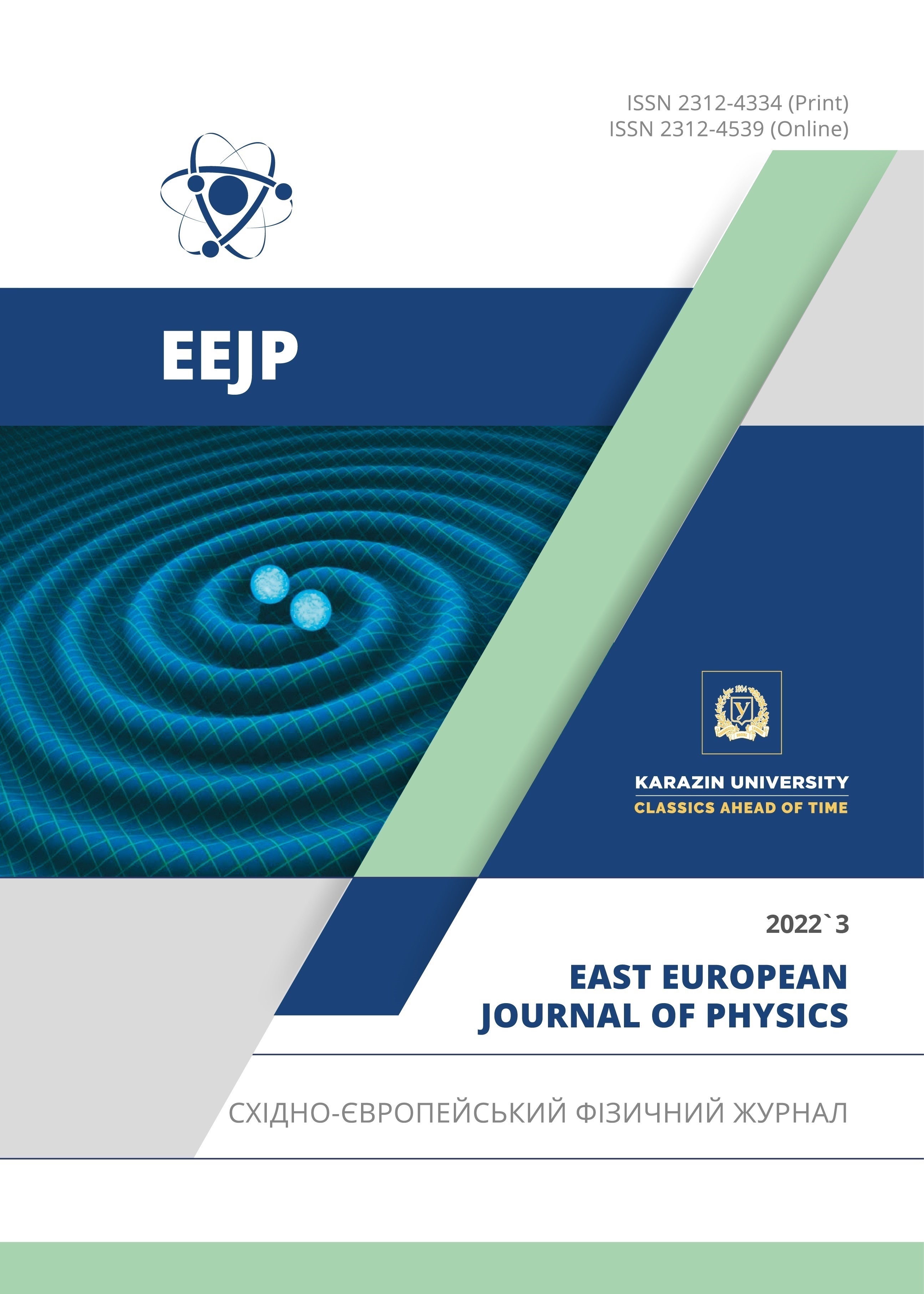Calculation of the Absorbed Dose by a Borosilicate Glass Matrix and its Simulated Irradiation
Abstract
The state of liquid radioactive wastes (LRW) management at Ukrainian Nuclear Power Plants (NPPs) is characterized by the lack of a completed technological cycle from processing to obtaining the final product suitable for further long-term storage or disposal. As a result, the storage tanks for bottoms residue (BR) are 65-75% full (Zaporozhye and South-Ukrainian NPPs), and the resource for placing molten salt at Zaporizhzhya NPP (92.7%) is close to exhaustion [1]. Therefore, the development of technologies and materials for NPP LRW solidification is an urgent need and aims to ensure the processing of LRW to a solid state that will meet the acceptance criteria for disposal in centralized storage facilities. One of the effective methods of LRW solidification is their vitrification. The main advantage of vitrification is that during the vitrification process the volume of waste is reduced by several times and this saves expensive storage space [2, 3]. The purpose of this work is to calculate the absorbed dose that borosilicate glass matrices with included bottoms residue will accumulate over 300 years of storage, and to study the effect of simulated X-ray irradiation on their physical and mechanical properties.
Downloads
References
S.Y. Sayenko, V. Shkuropatenko, A. Pylypenko, A. Zykova, S. Karsim, V. Andrieieva, and S. Moshta, PAST, 2, 103 (2020), https://vant.kipt.kharkov.ua/ARTICLE/VANT_2020_2/article_2020_2_103.pdf.
N. Laverov, B. Omelchenko, S. Udincev, S. Stefanovskii, and B. Nikonov, Geology of ore deposits, 55, 87 (2013). (in Russian)
M. Ozhovan, and P. Poluektov, Priroda, 3–11 (2010). (in Russian)
S. Luo, J. Sheng, and B. Tang, Journal of nuclear materials, 298, 180 (2001), https://doi.org/10.1016/S0022-3115(01)00592-X.
S. Agostinelli, J. Allison, K. Amako, J. Apostolakis, H. Araujo, P. Arce, M. Asai, et al, Nuclear Instruments and Methods in Physics Research Section A: Accelerators, Spectrometers, Detectors and Associated Equipment, 506, 250 (2003), https://doi.org/10.1016/S0168-9002(03)01368-8.
J. Allison, K. Amako, J. Apostolakis, H. Araujo, P. Arce Dubois, M. Asai, G. Barrand, et al, IEEE Transactions on Nuclear Science, 53, 270 (2006). https://doi.org/10.1109/TNS.2006.869826.
J. Allison, K. Amako, J. Apostolakis, P. Arce, M. Asai, T. Aso, E. Bagli, and et al, Nuclear Instruments and Methods in Physics Research Section A: Accelerators, Spectrometers, Detectors and Associated Equipment, 835, 186 (2016). https://doi.org/10.1016/j.nima.2016.06.125.
S.V. Stefanovskii, The Soviet Journal of Glass Physics and Chemistry, 16 (1991). (in Russian)
S. Stefanovskii, I. Ivanov, A. Gulin, and F. Lifanov, Radiokhimiya, 35, 106 (1993). (in Russian)
Copyright (c) 2022 Volodymyr Morgunov, Serhii Sayenko, Volodymyr Shkuropatenko, Yevhenii Svitlychnyi, Olena Bereznyak, Serhii Lytovchenko, Volodymyr Chyshkala

This work is licensed under a Creative Commons Attribution 4.0 International License.
Authors who publish with this journal agree to the following terms:
- Authors retain copyright and grant the journal right of first publication with the work simultaneously licensed under a Creative Commons Attribution License that allows others to share the work with an acknowledgment of the work's authorship and initial publication in this journal.
- Authors are able to enter into separate, additional contractual arrangements for the non-exclusive distribution of the journal's published version of the work (e.g., post it to an institutional repository or publish it in a book), with an acknowledgment of its initial publication in this journal.
- Authors are permitted and encouraged to post their work online (e.g., in institutional repositories or on their website) prior to and during the submission process, as it can lead to productive exchanges, as well as earlier and greater citation of published work (See The Effect of Open Access).








